Have you ever wondered how your favorite apps talk to each other? Think about logging into a game with your Google account or paying through PayPal on an e-commerce site. That’s all possible because of APIs. They’re like digital messengers, making sure systems communicate smoothly. But did you know there are different types of APIs designed for specific purposes? Let’s break them down step by step.
What is an API?
In simple words, an API (Application Programming Interface) is like a waiter in a restaurant. You don’t go into the kitchen yourself. Instead, you tell the waiter what you want, and they bring it to you. Similarly, an API takes your request, tells the system what you need, and brings the result back.
For example, when you book a flight online, APIs connect airlines, payment gateways, and confirmation systems in real time.
Also Read: HTTP Methods – A Complete Guide for Developers
Types of APIs Based on Architecture
Beyond accessibility, APIs can also be classified based on their architectural styles and protocols.
1. REST APIs
REST (Representational State Transfer) APIs are the most widely used due to their simplicity, scalability, and flexibility.
Key Characteristics:
- Stateless architecture.
- Use of standard HTTP methods like GET, POST, PUT, DELETE.
- Data commonly exchanged in JSON or XML.
Examples: Facebook Graph API, GitHub API.
Use Cases:
- Web and mobile application development.
- Cloud services and IoT systems.
- Integrating third-party services seamlessly.
2. SOAP APIs
SOAP (Simple Object Access Protocol) APIs follow a more rigid and standardized messaging protocol compared to REST.
Key Characteristics:
- Operates over HTTP, SMTP, or other protocols.
- Uses XML-based messaging.
- Built-in error handling and higher security.
Examples: Payment gateways, banking systems, and telecom services.
Use Cases:
- Mission-critical financial systems.
- Enterprise-level applications requiring strict compliance.
- Secure business-to-business integrations.
3. GraphQL APIs
GraphQL is a query language developed by Facebook, offering more flexibility compared to REST.
Key Characteristics:
- Clients can request exactly the data they need.
- Reduces over-fetching and under-fetching of data.
- Strongly typed schema ensures clarity.
Examples: GitHub GraphQL API, Shopify API.
Use Cases:
- Real-time applications.
- Mobile apps needing efficient data retrieval.
- Applications requiring flexible queries.
4. gRPC APIs
gRPC (Google Remote Procedure Call) is a high-performance RPC framework that uses HTTP/2 for transport and Protocol Buffers for data serialization.
Key Characteristics:
- Faster and more efficient than REST in many scenarios.
- Supports streaming requests and responses.
- Strongly typed contracts.
Examples: APIs for cloud-native applications and microservices.
Use Cases:
- Real-time communication in distributed systems.
- IoT device communication.
- Scalable microservices-based architectures.
Also Read: Anonymous Functions in JavaScript
5. WebSocket APIs
WebSocket APIs enable real-time, two-way communication between client and server.
Key Characteristics:
- Persistent connections.
- Ideal for live data streaming.
- Low latency interactions.
Examples: APIs for chat applications, stock market tickers, and multiplayer games.
Use Cases:
- Live messaging platforms.
- Streaming sports updates.
- Financial trading applications.
Also Read: JavaScript Project Ideas to Boost Your Portfolio
Other Types of APIs
Apart from the major categories, APIs also appear in different environments:
- Web APIs: Allow apps to talk over the internet.
- Operating System APIs: Example: Windows API or Android API.
- Library APIs: Allow developers to reuse code from software libraries.
- Hardware APIs: Connect software with hardware devices like printers or sensors.
Also Read: Semantic HTML: Boost Accessibility, SEO, and User Experience
FAQs about Types of APIs
REST APIs are the most popular due to their simplicity and scalability.
Yes, but they require proper authentication and security measures.
They offer more control, better integration, and protect sensitive data.
Like any system, APIs can be hacked if not secured properly with tokens, encryption, and authentication.
Basic programming knowledge, understanding of HTTP methods, and familiarity with JSON or XML formats are essential.
APIs are the backbone of our digital interactions. From ordering food online to streaming videos, they make life seamless. Understanding the different types of APIs-public, private, partner, composite, REST, SOAP, GraphQL, gRPC-helps businesses and developers make smarter choices. The future is API-driven, and those who adapt early will always stay ahead.
You may also like
Gemini CLI: Google’s Open Source AI Terminal Agent
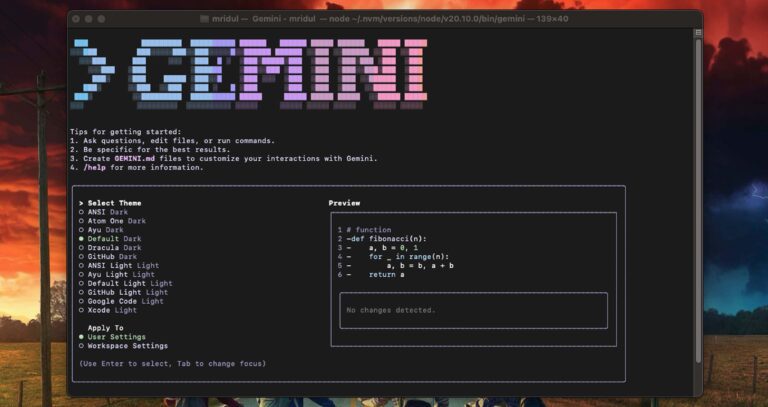
Jun 26, 2025
·4 Min Read
Google has once again reshaped the future of developer productivity and AI-assisted coding by launching Gemini CLI, an open-source AI agent that seamlessly integrates the power of Gemini AI directly into your terminal. With 1,000 free requests per day, instant access to automated coding tasks, and the ability to generate images, videos, and website templates, […]
Read More
How to add Google Web Stories in Next JS
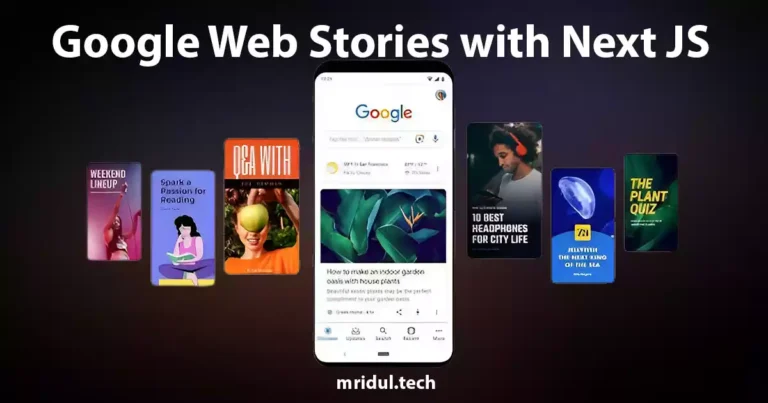
Dec 14, 2023
·10 Min Read
In the fast-paced digital world, user engagement is key to the success of any website. One effective way to captivate your audience is by incorporating Google Web Stories into your Next JS website. These visually appealing and interactive stories can make your content more engaging and shareable. In this comprehensive guide, we’ll walk you through […]
Read More
How to send Emails in Next JS for Free using Resend
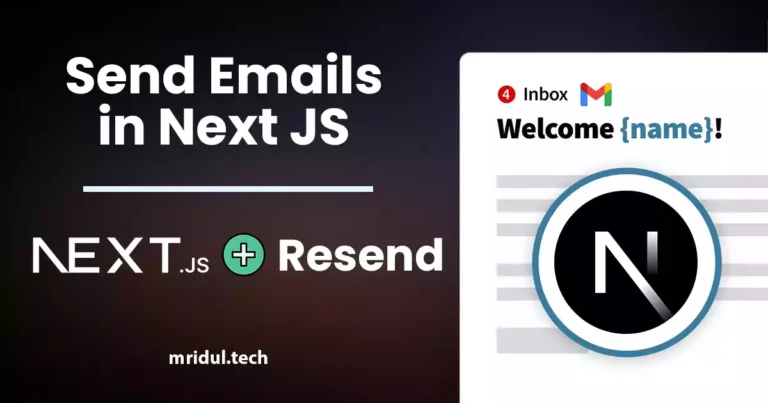
Nov 10, 2023
·7 Min Read
Sending emails in web applications is a crucial feature, and in this article, we will explore how to send Emails in Next JS for free using Resend. Next JS is a popular framework for building React applications, and Resend is a handy tool for email integration. By the end of this guide, you’ll have the […]
Read More
How to add Google Login in Next.js with Appwrite
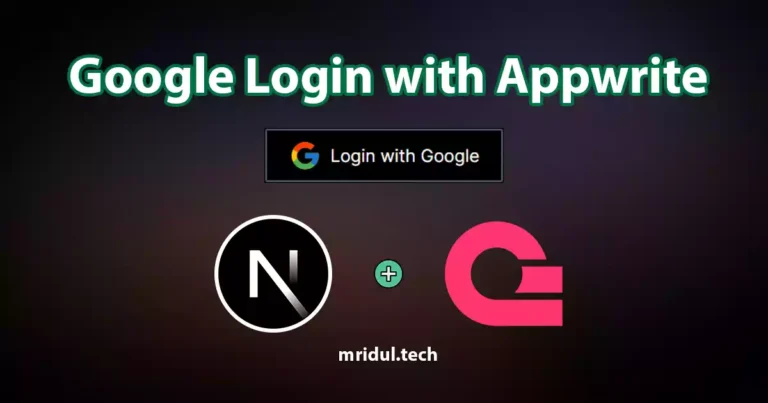
Nov 01, 2023
·7 Min Read
Are you looking to enhance user authentication in your Next.js application? Integrating Social Login with Appwrite can be a game-changer. Add Google Login to your Next.js app with Appwrite. This article will guide you through the process, and practical tips to add Google Login in Next.js with Appwrite. GitHub Code: Google Login in Next.js with […]
Read More
JavaScript Project Ideas to Boost Your Portfolio

Oct 13, 2023
·3 Min Read
JavaScript is the backbone of web development, and mastering it is essential for any aspiring developer. While learning the basics is crucial, building real-world projects is the key to solidifying your knowledge. In this comprehensive guide, we’ll present a diverse range of JavaScript project ideas that cater to different skill levels and interests. These projects […]
Read More
How to Generate robots.txt in Next JS?
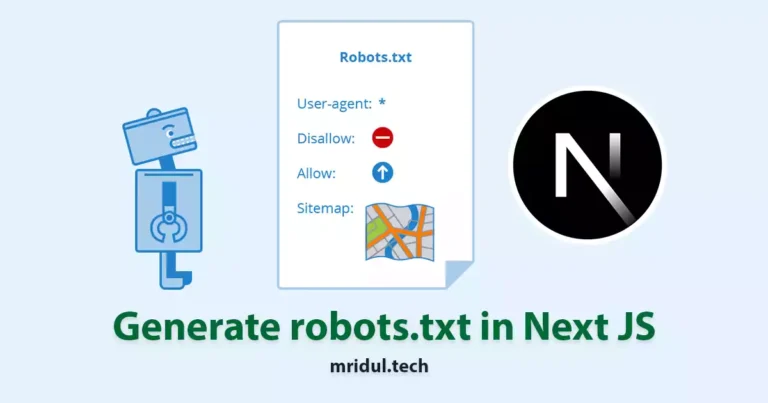
Oct 05, 2023
·4 Min Read
In the world of web development and search engine optimization (SEO), ensuring that your website is easily accessible and properly indexed by search engines is paramount. One essential tool that aids in this process is the creation of a robots.txt file. In this comprehensive guide, we, the experts, will walk you through the process of […]
Read More



